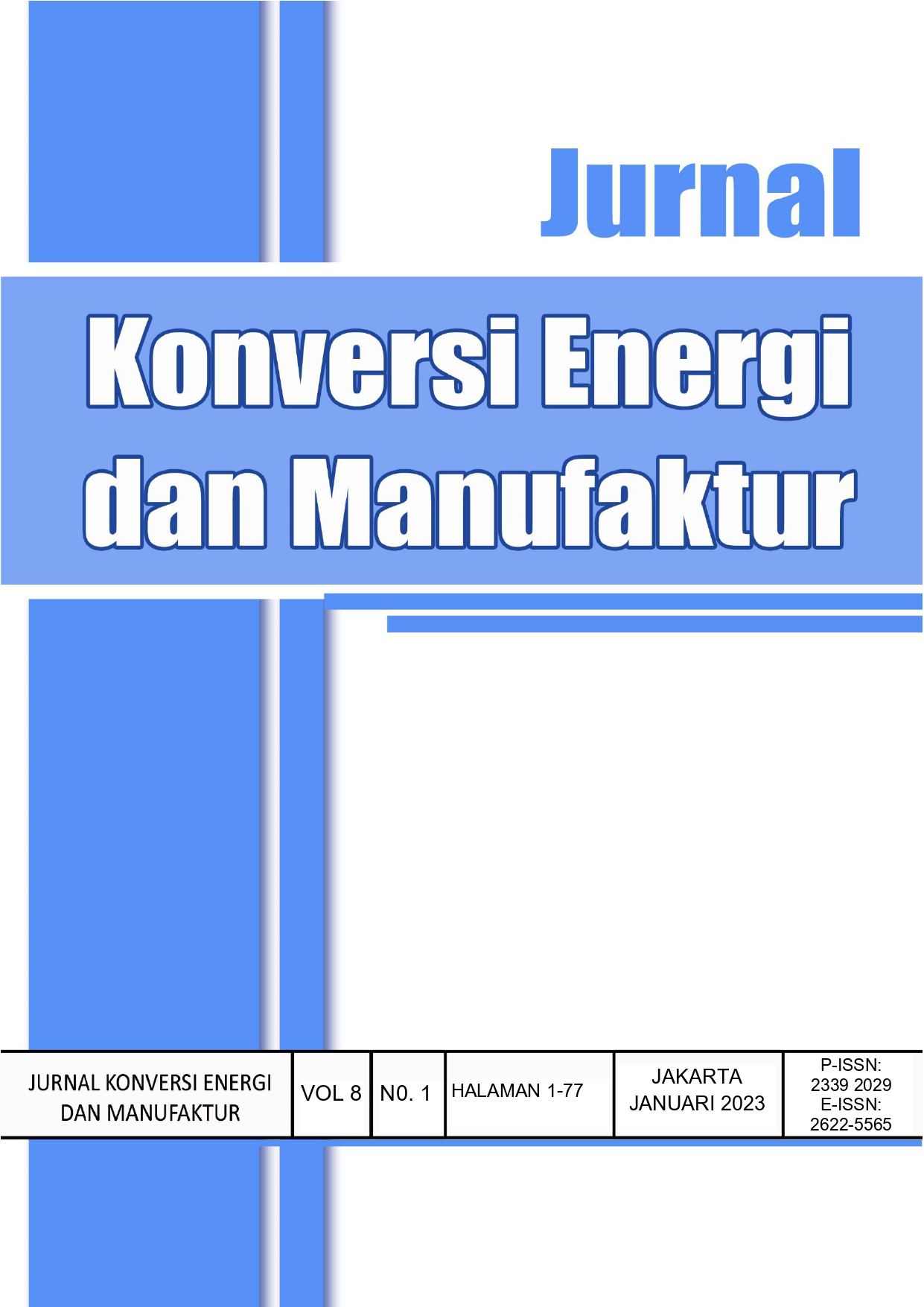ANALISIS SIMULASI KEKUATAN DAN PEMBUATAN RANGKA KENDARAAN SEPEDA MOTOR LISTRIK
Analysis of Strength Simulation and Frame Fabrication of Electric Motorcycle Vehicle
DOI:
https://doi.org/10.21009/JKEM.8.1.7Keywords:
Simulation, Frame, Power, Electric VehiclesAbstract
The development of the automotive industry, especially my vehicle transportation, has changed from a fuel motor to an electric motor vehicle. The purpose of writing is to get results from the simulation of frame design and power on an electric motorcycle. The simulation result from the design where the material used is low carbon steel that the frame of an electric motorcycle with a rider weight of 170 kg is safe based on the "machine element" book on the dynamic load safety factor, which is determined from 2.0-3.0 For static loads 1.25-2.0 and shocks 3-5 this frame construction includes dynamic loads, displacement resulting from the stress analysis of the electric motorcycle frame receiving a load of 1700 N which is assumed to be the weight of the rider. Based on the simulation results, the maximum displacement is 0.2118 mm, and the von Mises stress generated by the stress analysis of the electric motorcycle frame receives a load of 1700 N, which is assumed to be the weight of the rider. Based on the simulation results, the maximum von Mises is 101.3 MPa. The von mises voltage. This electric motorcycle uses a 48 V BLDC brushless motor, 1500 W, 550 rpm, and uses a 58 V and 24 Ah lithium-ion battery.
References
[2] Zulfikri, and S. Maimunah, “Kajian Konsumsi BBM Pengguna Kendaraan Pribadi Roda Empat Di Jabodetabek,” Warta Penelitian Perhubungan, vol. 22, no. 5, pp. 513-526, 2010.
[3] A. Rizal, “Pembuatan Sepeda Listrik Tenaga Surya,” Universitas Pasundan, pp. 1-62, 2014.
[4] R. A. D. Apresco, “Perbandingan Unjuk Kerja Motor Brushless Direct Current Dengan Brushed Direct Current Pada Nogogeni Urban Konsep,” Institut Teknologi Sepuluh Nopember, pp.1-96, 2017.
[5] N. M. A. Wijaya, I. N. S., Kumara, and C. G. I. Partha, and Y. Divayana, “Perkembangan Baterai dan Charger untuk Mendukung Pemasyarakatan Sepeda Listrik di Indonesia,” Jurnal Spektrum, vol. 8, no.1, pp. 15-26, 2021.
[6] I. P. A. S. Adi P., I. N. S. Kumara, and I. G. A. P. R. Agung, “Status Perkembangan Sepeda Listrik Dan Motor Listrik Di Indonesia,” Jurnal Spektrum, vol. 8, no. 4, pp. 8-19, 2022.
[7] M. A. Hendrawan, P. I. Purboputro, M. A. Saputro, and W. Setiyadi, “Perancangan Chassis Mobil Listrik Prototype "Ababil" dan Simulasi Pembebanan Statik dengan Menggunakan Solidworks Premium 2016,” Proceeding of The URECOL, pp. 96-105, 2018.
[8] B. Setyono, Mrihrenaningtyas, and A. Hamid, “Perancangan Dan Analisis Kekuatan Frame Sepeda Hibrid “Trisona” Menggunakan Software Autodesk Inventor,” Jurnal Iptek, vol. 20, no. 2, pp. 37-46, 2016.
[9] A. Fahrudin, M. Rahmat, and R. Waluyo, “Rancang Bangun Tabung Udara Dingin Terkompresi dengan Tekanan 5 Bar,” JTERA (Jurnal Teknologi Rekayasa), vol. 4, no. 2, pp. 175-184, 2019.
[10] R. Waluyo, A. R. Ahmad, G. E. Pramono, and Fahrulrizal, “Perancangan dan Analisis Kekuatan Rangka Cetakan Komposit Kayu-Plastik Menggunakan Finite Element Analysis,” JTERA (Jurnal Teknologi Rekayasa), vol. 5, no. 1, pp. 63-72, 2020.
[11] J. B. Manalu, “Rancang Bangun Sepeda Motor Listrik,” Universitas Sumatera Utara, 2017.






















